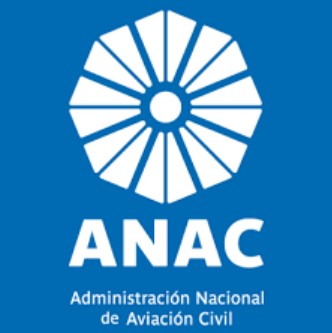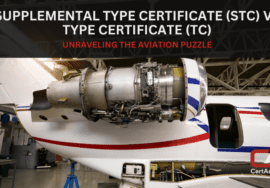
Supplemental Type Certificate (STC) – What No One is Talking About.
Table of Contents
Introduction
Before diving into the complexities, it is essential to clarify what a Supplemental Type Certificate (STC) is and why it is necessary. This certificate is the approval issued by a Civil Aviation Authority for a “major modification” to the design of an aircraft, engine, or propeller that already has a Type Certificate. It is the indispensable regulatory passport for that modification to fly legally.
Now, any professional can describe this formal process. But there is a parallel conversation, one that takes place behind closed doors, after budgets have been broken and deadlines have been missed. This publication is about that conversation. It doesn’t focus on the “what,” but on the “what if.” It addresses the topics the industry avoids and the realities that define the difference between a successful STC and a costly failure. This is what no one is talking about.
The Hidden Game: Human Variables and Data Wars
Officially, the STC process is a technical and objective path. In practice, it is full of subjective factors and power struggles that no one openly discusses.
The Human Variable and “Reputation Capital”: What no one talks about is that the success of your project depends on the dynamic with the team assigned by the Authority’s certification department. It is rarely a single inspector who intervenes; it is a team that verifies documentation, conducts inspections, and evaluates tests. And this is where an intangible asset comes into play: reputation. No one quantifies it, but everyone knows that a company with a history of transparent collaboration and quality work will face a smoother process. This “reputation capital,” which specialized firms like CertAer build over years of successful projects, is an unwritten lubricant that eases the burden of demonstrating compliance.
The Domino Effect as a Systemic Failure: Design changes are discussed, but no one talks about the risk of a cascade failure as a systemic vulnerability. It’s not just that a new antenna might affect aerodynamics; it’s about how a seemingly harmless software change can interact with a legacy system, creating a critical in-flight failure that no one anticipated. Admitting that not all interdependencies were considered is seen as a lack of foresight, so these lessons are often learned in private and at a very high cost.
The Data Wars and Reverse Engineering: What no one is willing to admit openly is the cold war over data from the Original Equipment Manufacturer (OEM). Access to this data is often a strategic weapon that OEMs use to block or delay modifications they don’t control. Faced with this barrier, the ability to perform reverse engineering is not just a technical skill; it is a fundamental strategic asset. No one talks about the enormous investment and risk involved in having this capability, an expertise that is, in fact, a key differentiator for highly specialized consultancies like CertAer.

The Shadow Budget: The Costs That Are Never Approved
The official budget for an STC is just the tip of the iceberg. The real cost lies in the “shadow budget,” a sum of unforeseen expenses that industry veterans know exist, but which no one talks about in the planning phase.
Budgeting for Failure: No one talks about including failure in the budget. Project plans are written with an optimistic bias, assuming that prototype tests will go well on the first try. A realistic—and rarely publicized—approach is to budget for at least one full cycle of test failure and redesign. Not doing so is not optimism; it is a lack of preparation.
The “Second Certification”: The Production Go-Ahead: The most silenced truth is that the STC doesn’t end with the technical approval of the modification. Afterward, a second, equally complex phase begins: production approval. You must prove that you have a quality system to manufacture the new parts or develop the software consistently and traceably. This involves audits, more documentation, and managing a supply chain—a “second certification” that doubles the effort and is often catastrophically underestimated.
Opportunity Cost as an Existential Threat: The direct costs of a delay are mentioned, but the real taboo subject is opportunity cost. While your project is stuck in a bureaucratic or technical spiral, a competitor can get their STC approved and capture the market you were targeting. Delays don’t just consume resources; they can completely annihilate the business model upon which the project was founded.
The Uncomfortable Truth: Strategic Decisions That Are Omitted
The International Chess Game: Where to Certify First? What no one discusses at the beginning is the geopolitics of certification. Do we submit the STC to the FAA, EASA, ANAC, or another authority? The choice is crucial. Thanks to bilateral agreements, an EASA STC may be much easier to validate in certain countries than one from another authority, and vice versa. This decision requires a global strategic vision, an area where the experience of consultancies dedicated to aeronautical certification, as is the case with CertAer, becomes invaluable.

Ego as a Risk Factor: What no one talks about is how many projects fail due to internal politics. The refusal to hire external experts because it is seen as an admission of weakness (the “not invented here” syndrome) or a communication breakdown between the technical team and management are more common causes of failure than anyone would like to admit.
Intellectual Property as an Afterthought: In the frantic race for certification, no one wants to talk about the long-term intellectual property (IP) strategy. Teams are so focused on approval that protecting the valuable IP they are creating becomes an afterthought, a mistake that can cost them the competitive advantage they worked so hard to achieve.
Starting an STC process without openly addressing these issues is like sailing into a storm with your eyes closed. The real preparation is not about knowing the rules, but about understanding the game. It involves discussing the uncomfortable, budgeting for failure, and recognizing that the biggest risks are not always technical. Having these conversations “that no one is talking about,” often with the support of an expert partner who has already lived through them, is not pessimism; it is the mark of a mature organization truly prepared for success.







